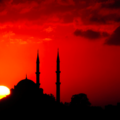Stuart Blazer’s Ruffled Surf
That silo you never saw until today was yours the day you were born. –Richard Hugo
Why don’t you make a mistake and do something right. –Sun Ra
Man was put on this earth for one purpose : to make civilization. –Joseph Brodsky
1. Preliminaries (dig the foundation)
What’s a measly critic to do — when she turns over a local rock and discovers a coruscating gemstone, whose brilliance and inviting depth outdoes her powers to define, evaluate? She wants to share her discovery with the big wide world and though motives are ever mixed, we have to grant this specific one its calibrated innocence: it is professional, vocational. Thus, with such implicit encouragement, she might as well plunge ahead — take Sun Ra’s advice, do something right. So I will do my best.
Fulsome disclosure: I have known fellow Rhode Islander Stuart Blazer, off and on, at close distance and at distant closeness, for at least 30 years. For some officials, this immediately disqualifies my text as criticism — no peer review for this reviewer! — ruled out by favoritism, subjectivity, special pleading. And certainly these matters are important, in a literary milieu (“Poemlandia”) under suspicion almost as much as Washington and Wall Street for insider trading, good-ol’-boyism, an absence of ethical standards. It’s the fairness factor of aesthetics. All I can do is try to roll myself out of the way, and let the evidence of this poet’s lifelong effort speak in my place. I’m getting there, dear reader.
But this question of critical objectivity opens another facet of a conundrum: how do we define “objectivity” with respect to art and poetry? The question impinges on the place of poetry in relation to science, and to contemporary intellectual culture as a whole. It is also particularly relevant to the case of a poet like Blazer: a local-world poet, an unknown-great poet, a natural, an original in the Emerson-Whitman sense — as Pound put it, speaking of his poet-persona Odysseus, “A man of no fortune / with a name to come.” Stuart recently said to me (as we were catching up on absent years): “I’ve been writing mostly for the writing, not so much for publication.” A great deal of anguish and struggle perhaps lies buried, held at bay, under these offhand words.
Yet, in the end, the poet lives with, and for, her native gift: and reading Stuart’s poems — knowing his decades-long imbrication within worlds of art and music and architecture, both here in R.I. and far afield — I am struck by the thought that the espousal, the knotting-together of the poet’s vocation and the “poetry of life” (in Wallace Stevens’ sense) begins with the infant’s first cry emerging from mother’s womb to air. Poets are born, not made: and after being born, they must make themselves, make their own way. This is one of the lessons that an older master craftsperson like Blazer — a bridge-builder between poem and experience — can perhaps offer to younger poets, understandably disoriented by the heat and mirages and pretentious pyramids of a world literary scene wounded by (often-unintentional) guile, ambition, malice, trumpery, officious pedantry, obscurantism, vulgarity, ideological sophistry, and venal place-seeking.
As they say, “nothing will come of nothing.” What is the affinity between tradition and — not innovation, but rather, originality? The shadowy caricature lurking behind every designated Emersonian Poet-as-force-of-nature is the poet as local crank, missing out on history while re-inventing the wheel. How will Blazer avoid this fate? Pound again writes: “A man’s Paradise / is his good nature.” Those sandy pyramids of editorial winnowing — the flood-tide, ever-shifty power of mainstream literary culture — are really waiting for the sunlight of a new geometry, a new architecture. It will be an edifice of human inwardness. Here is Blazer (Look Under ARCH / ARKHE, “beginning”):
Blind to blueprints
__________lost
in spatial literature,
we learn motion
__________by being moved,
responsive to an inwardness
not gotten at through eyes alone.
Which brings to mind another motif re-echoed here, a quote from Robert Duncan: a poet offers “responsibility / as the ability to respond.”
Let me return to this question, the principle of objectivity. The poetic culture of our time seems to toss and turn, uneasy and restless on the couch of culture at large. Society still anchors itself within the shibboleths of 20th century scientism: living organisms, holistic forms, defined reductively by their dissected parts; truth as something inhumanly abstract. Academic critical theory, on the other hand, is characterized by a violent reaction against such positivism — in the form of Nietzschean, Heideggerisch, Derriditive de-centering, a relativism ex nihilo, ad nihilo. Poetry and art, sidelined as “superstructural epiphenomena” by these 20-cent mythologies, nestle within their special shelf-ranges, masking their precarious status with vigorous posturings in various febrile modes (street-talky, politico, postmoderniste, neo-Restoration) — disciplined by meticulous devotion to product-training, amid time-honored rituals of provincial collegiate advancement. Sounds fun, doesn’t it?
Just here, in the heart of this cul-de-sac, it is philosophy — paradoxically — that offers poetry a sprig of green. In the thought of 20th-century chemist and polymath Michael Polanyi, we find, as it were, a sense of the world opened to a fresh plane. In his masterwork, Personal Knowledge [1], Polanyi unties chains of false reasoning going back to Descartes. Rationality, for Polanyi, is not an erasure of the human: rather, all knowledge (and thus reality) is fundamentally personal. Truth, nevertheless, is not relativized by solipsism. Truth is universal, folded in infinite depths of future meaning, which our acts of discovery — in art and science as well as word and deed — shape as insight, on the way. This is the tacit context of all our explicit formulae in any field, a context of seeking, which we share with the lowest life-forms (worms also plumb the right path). Our equations can succeed or fail, and this is what differentiates living consciousness from inanimate matter. And this risk is what defines the adventure itself. Consciousness ascends toward higher, unseen (sometimes intuited) levels of reality, defined not by their divisible parts, but by the half-hunches of more comprehensive meaning.
If my paraphrase sounds like arrant mumbo-jumbo, my apologies (Polanyi says it better himself, of course). I would go so far as to assert that this thinker might become, for us, what Aquinas was for Dante: map-maker of a more human dwelling-place on earth. His demolition of the fanaticism of ideological objectivity, on behalf of a unified, metaphysical reality — grounding both scientific and artistic tradition — may prove pivotal for future thought. And if so, it will fulfill one of the great hope-against-hopes of 20th-century poetry, the Acmeist perspective of Gumilev, Akhmatova, and Mandelstam. Emerging out of that “most artificial city” (Dostoevsky) of St. Petersburg, Acmeism proclaimed a literary culture of “chasteness” and earthbound sanity: founded in an architectural, architectonic conception of humane civilization. [2]
Which brings us back to Stuart Blazer… one of whose two new books of poetry — Rhizome Skyline — was published, fittingly, by the Rhode Island School of Design’s dept. of architecture.
2. Rhizome Skyline (raise the roof-beam)
Stuart Blazer is a trim, handsome, fiftyish young man with curly black hair, a Mediterranean visage (Romany-Jewish), and large, alert, and early ears. He has an easy smile, and something vaguely faun-like about him — open-faced yet satyr-sly (wise as serpents, innocent as doves). Picture him with pan-pipes, gazing out from a sunlit thorn-break: this is precisely the role he has played, mysteriously, for decades, all around his home state, manifesting in multifarious interstices of local culture. High schools, libraries, galleries, concerts, nursing homes, kindergartens. . . this poet can say, with Whitman, I was the man, I suffered, I was there. So much presence, so much performance, hidden beneath understatement (“I’ve focused on writing, not publication”).
Blazer is also something of a reporter (another Whitmanlike aspect). Responsibility: ability to respond. What do we mean when we say Stuart Blazer is a natural-born poet? First, we recognize a certain hunter’s eye for beauty. He is attentive to his surroundings with at least five senses, and records this awareness in pithy, witty, accurate, striking anecdote. His airy paean to smoking (“Metaphysical Tobacco”) captures a slice of this sense of wonder, a fusion of wry, zen-like detachment with big-hearted gusto, gaiety:
Ignition of mind & air,
reminder that we are
fallen ash, rising smoke.
Moreover, Blazer’s poetry is natural in the sense of establishing a comfortable synthesis, a lively ambience of poem (word) and world (home). Blazer began writing before the invention of “procedures” or robot-thematics; one can trace roots back through the projective verse of Olson, and the contextual, “local” art of Richard Hugo, to the clear-eyed spareness of both Stevens and W.C. Williams, as well as the precision of imagery cherished by Pound. In other words, although Blazer is capable of delightful villanelles, rhyming songs, haiku, etc, his tendency is to foreground a style not so much sonorous as pointed (fencing-pensive pointillist), a visual record of experience. Here’s the short poem “Back-roads in Fall:”
At 60 miles per hour
wood ripples
along the sides of barns;
at 30 it slows
to a painterly grain.
That hazy greenish white
is mountain laurel.
Braking to a stop
bright circles are nailheads
in the sun;
you can tell how worn
the clapboards are.
Yet even as I transcribe, I reckon once more my insufficiency, incapable of doing justice to Blazer’s multifacetious accomplishment. There is also this poet’s flashing sense of humor. Here is “Duration” in its entirety:
“Forever”
has 7 letters.If you’re fast
you get therein about
a second.
Wit, word-play, and a lightning, delightful virtù for paradoxical shifts of focus, which unite both wit and word-play — these are hallmarks of Blazer’s observations — just one of the ways in which he celebrates the ordinary, offering his personal blessing to the common life. From “Yuri Gargarin’s Powdered Tears:”
Days are funnels
narrowing to what happens
to us; my mother’s mother,
born in Odessa, sits
with her daughter listening
to me read poems.
We are three translations
from the Russian.
* *
* *
Reaching to kiss
this smoothly wrinkled cheek
my lips brush an apple
from another world.
Here’s another brief poem in its entirety:
“The Return”
_____Eiko and Koma dancingThe bamboo flute of a foot
_touches ground
__then earth shoots
___through it
____like air.
Rhizome Skyline is lofted under the aegis of architecture. The central characteristic of architecture is its quality of embodiment. Architecture is an exploration of physical materials in terms of their resistance: the aim is to produce a structure both useful and beautiful, which can counteract the destructive or entropic forces of time, weather, violence, and gravity. The architect applies imagination to the shaping of physical materials into a form, which embodies a balance of these force-resistant qualities. Some implications for poetry emerge when we consider its affinities with architecture in the light of the philosophy of Polanyi: if all human knowledge involves an irreducible aspect of personal achievement, then we can recognize a kinship between the architect’s absorption in materials, in weight and measure, with the poet’s allegiance to actuality, to experience in time and space. The poetic word discovers its own weight and measure, as it seeks an adequate response to the embodied, experiential life that we all know and share. This affinity is paralleled — symbolized — on a more basic level (noted since ancient times) in the analogy between the measures and proportions of a building, and those of the human body. And Rhizome Skyline illustrates this matrix of relations in at least two ways.
First, the book is retrospective, a kind of selected poems; as such, Blazer’s work displays a time-resistant, weathered quality. Many of these poems were written in the 1970s and ’80s, yet they remain vivid, they still “stand.” The experiences they report and evaluate cannot be consigned to the archive of “dated” (outdated) records in an obsolete idiom: they are alive. Second, and more importantly, Blazer — in both his extended introduction and in the poems themselves — reflects upon, thematizes, and evokes the connections between persons, the human body, the natural world, and the beautiful works of artifice (buildings, ships, paintings, dance, music) with which humanity builds a home in nature (a supremely “Acmeist” theme). The title, Rhizome Skyline, epitomizes the playful way Blazer fulfills this task. With a nod, perhaps, to the ideal of social interaction defined by Deleuze and Guattari (“the rhizome”), Blazer’s title suggests a new form of the city, produced by the myriad spread of underground roots — an organic connectivity, celebrated in metaphor (uniting “sky” with “ground”). [3] Rhizome Skyline opens with an image of origami:
Space origamied into dimension
moves walls: if you stare
long enough, eyes tear,
attention drifts.
__________Just to see
is allegorical.
From there, the book unfolds, further and deeper, into ribs and curvature of painting, music, dance, landscape, the sea, the shore — and within all, wistfully-merrily marrying all, the human form, the human heart:
where is the building
if not first within the builder?
In such ironworking Blazer indeed follows the likes of Olson and Pound, but he adds the essential thing they often lack: kindness, empathy, humility. He can be sharply satirical (and in some explicitly-political poems, gut-wracking, conscience-provoking), yet the overriding keynote is a spiritual detachment, an inner freedom, bound up with compassion (Whitman, again: Blazer, among other metamorphoses, has devoted years to the nursing care of elder friends and family). It’s this secretive amber, this honeyed, mellifluous modesty and humility, I think, which helps him inhabit the natural world, and works of art, in such rich, indwelling, generative ways.
His path finds full expression in such beautiful hymns as “The Protestant Cemetery in Rome”, and especially “An Old Man & a Younger One Look Out While Looking In.” Blazer was one of the primary caregivers for his friend and mentor, poet Edwin Honig, who spent his last decade suffering from Alzheimer’s. “An Old Man. . .” is a moving threnody, inwardly fused with Beethovenish joy (Pushkin: “my sadness is luminous”). The poem opens with a magical Honig-quote — one of those gnomic, Heraclitean wisdom-aphorisms uttered from the depths of mental lostness, “Trees are the ambassadors of time.” It proceeds in a meditation on leaves, and trees, and the poet as both:
I would as lief be
as that leaf, airy
almost nothing, changing
with & like the wind. . .
* *
* *
A leaf is that part of wood
that gets away, botanical
bird, a
grain in air.
* *
* *
Trees are their own understudies
whose silence gathers force,
unfolds yet more leaves
in all their frayed near transparency.
Each role lives on as a ring
worn deep within, shining through
as everything does once
ploughed under.
* *
* *
And so with grieving.
My excerpt only notes a thin reed of the whole sonata. The faint allusion to Piers Plowman (“Love. . . lightest of all. . . as linden-leaf. . .”) rings through here; the poem is suffused with unrelinquished lovingkindness.
Reaching the conclusion of Rhizome Skyline, we realize we have been led beyond the confines of paper-folding and art faculties, folded into implications of a world both larger and deeper: from submarine depths of Hart Crane to sunlit Provençalia of Matisse, the bars of Marseilles; from the crusty lingua franca of southern New England triple-deckers, to haiku altitudes of Japanese zen. The book closes with light-coasting watercolor, “Souvenirs:”
The noises buoys make
have always soothed me;
even this far inland
their rhythms evoke a crying
I can’t manage on my own.Skin is an inferior metal,
its deceptive softness
implies resiliency
but when exposed to air
nerves rust.It’s late enough
to be early.
Birds peck the ground
for seed, unable
to fly away because
what they’ve taken
weighs so much
in their little mouths.
Yet again, though, this reviewer can’t quite epitomize the elusive glow of Blazer’s candle. But a few more excerpts might help do so. Here is part of “A Paper Life:”
Dig into earth
just by standing still,
deep spaces open
where air is diamond-hard,
the purest gem you can own.
And here, in its entirety, this very personal petit testament:
Night-vision
__________written during the Days of AweDeep in the year’s dirt
tangled roots bar my sightI have been, still am
buried alive.What can be dug is this,
my deepest clinging: upFrom earth, a jagged rock
shaped like a man.Let him stay rough
while his inside jewelis polished.
Blazer, Rhode Island’s native son, is currently (in one of his many incarnations) working as a wine-seller; his poems are a gift of fine old Narragansett red, to his native home, and to all of us — a sort of ecumenical (apparently un-Orthodox) communication, with love, from the house of his own skin and bones — his body and blood. Drink deep, and enjoy.
3. Aqua Firma (fresco the horizon)
Yet we are not finished with Stuart Blazer; he is just beginning. He who remarked “I’ve been focused on writing, not publication” had two books branch forth this year. This paradoxical denizen of littlest/Ocean State spent several years helping manage a bar in the Azores, and raising a daughter there. Responsible/responsive poet that he is, he made the most of it: Aqua Firma (walkable water) is the offspring. In this deeply-playful dolphin-leap, co-published in the U.S. and Portugal, our local Ulysses-correspondent spends time in a fado-Calypso world of glancing waves, salty distances, addio-isles. Taste and see this quote from the villanelle, “Mutabilities:”
I’ll never love again unless
Dragged that way by the hair.
There’s no such thing as faithfulness.Variety: sweet spice of sex
That sharpens the wish to taste, compare;
I’ll never love again: undress!
* *
* *
Exotic East, wild West
Both have made me quite aware
I’ll never love again unless
Surprised by faithfulness.
Or this, “Vacadivinhas (for Terceira’s sacred cows):”
Vaca da Gama
___Vacamões
Vacardi & Coke
___Drink of choice.
Vacacadabra!
___Vacalmoçar:
Vacamérica?
___Vacaçores!
Vacalhau,
___Vacananas,
Turf & surf
___In Cod we trust.
That’s all for now
___Vaca com Deus
Thanks for reading this
___Vacautobiografia
It’s a film we made together,
___Memorias de um gueixo.
There’s much more to this lovely, beautifully-designed little volume : but I will finish with another partial sliver, from “Haiku:”
What we call nature
is rhythm, time kept by stars.
Pulse, beat, drumskin tight.
. . .Dive from leaves to root.
Rise to taste the branch’s fruit.
Books let us be birds.
. . .Summer’s gold-leafed bowl
turned inside out: silver rain.
Everyone’s money.
. . .Azorean light
card-deck shuffled by sun-mist,
dealer’s hand hidden.
. . .
. . .Gertrude Stein’s Portuguese Rice Pudding
Arroz
is arroz is
arroz.
Blazer is arroz, yes — arozen, arisen, from the Rhody State. Let’s celebrate!





